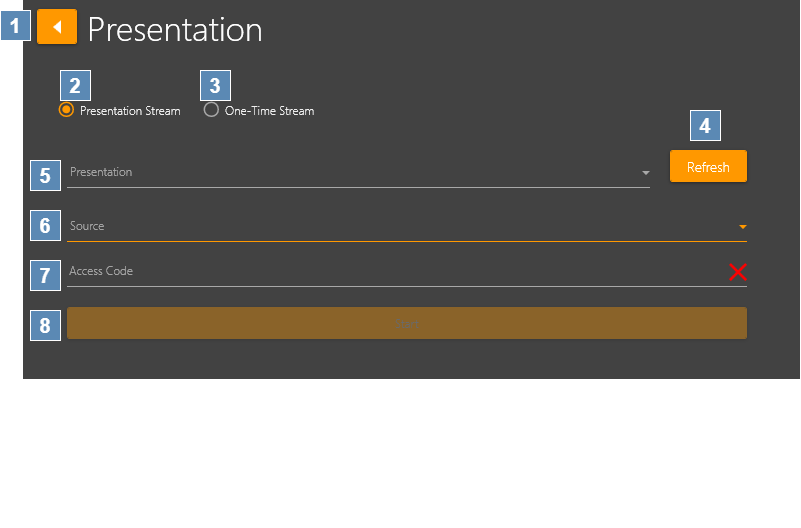Presentations
The Presentation (created in the SubC Streaming Service web application, Menu → Presentations) must be assigned to a Channel and Streaming in order for the Presentation to be available to the Stream Channel as Presentation Input.
Below is an overview of the Presentations Input in the Stream Desktop UI
Back arrow – Return to the Input options window.
Presentation Stream - Select if you want to connect to a regular streaming Presentation.
One-Time Stream - Select if you want to connect to a One-Time Stream. See One-Time Stream page for details. Note how the options are different when One-Time Stream is selected.
Refresh - If you do not yet see the name of the Presentation to which you want to connect, click Refresh to reload the list of currently streaming Presentations.
Presentations – Drop-down field shows a list of Presentations created in the SubC Streaming Service Web application from which you can select.
The Presentation you select must be active. An active Presentation is identified by a green illuminated button in front of the Presentation Name.
Source – Select the Channel that is streaming the video to the Presentation
Access Code Enter the Access Code for the selected Presentation. (Optional, see below)
A unique Access Code is assigned to each Presentation created in the SubC Streaming Service web application. The Access Code ensures only those who you invite to your Presentations can login to the Presentation Web Viewer to view your presentation.To find a Presentation Access Code, go to SubC Streaming Services web application, select the Menu → Presentations, select the Presentation and see Access Code.
Start – Click Start to begin the input Source with selected settings.
Presentations using Transmission Type: Smooth
SRT Receiver Latency Low | Medium | High
If you have selected a Presentation that is streaming via Transmission Type: Smooth, once the Presentation and Source is selected, the SRT Receiver Latency Low | Medium | High buttons appear. These settings allow you to adapt to variations in your Network quality.
You can select Low = 2s, Medium = 5s, High = 10s - whichever best suits your current Network conditions. For example, if you have optimal Network conditions, low dropouts, less buffering required, select Low for 2 seconds of buffering. If you need more buffering, select Medium for 5 seconds or High for 10 seconds.
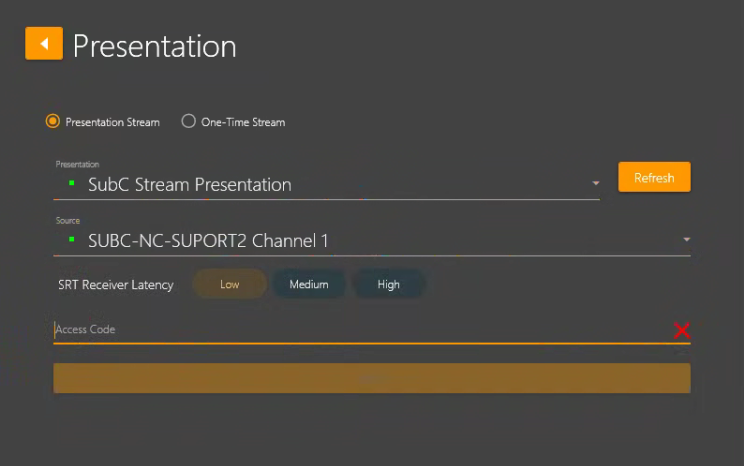
Ignore Access Code - Optional
If you prefer not to have to enter a Presentation Access Code, you can select Menu → Settings → Admin Settings -->Ignore Access Code
Select Menu → Settings → Admin Settings → Ignore Access Code
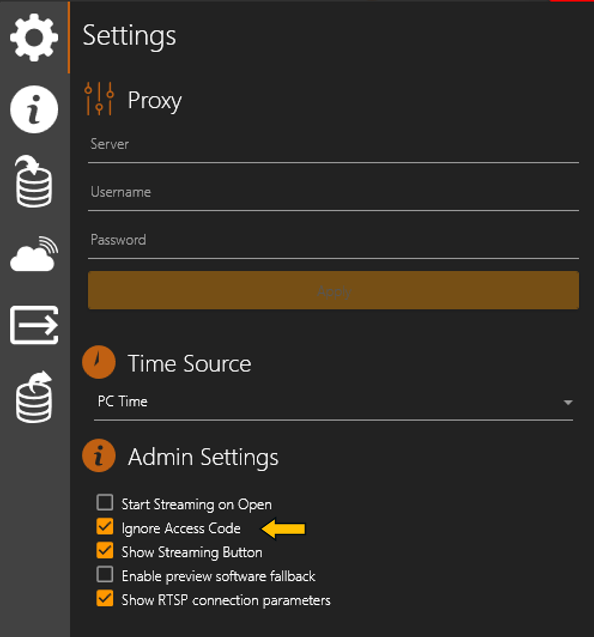
You can also use a Presentation as an input to a Channel, so we’ve made Presentation Access Code optional as a convenience for this specific purpose.
Check Ignore Access Code. When Ignore Access Code is checked on, the Presentations Input selection window will omit the Access Code field.
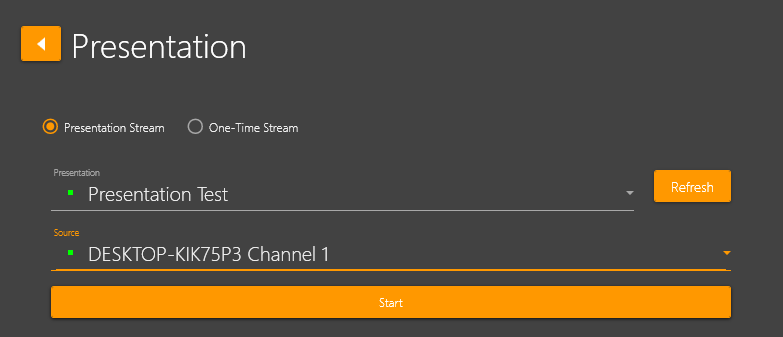
Select an active Presentation and its Source Channel [Ignore Access Code is on], Click Start
Using Presentation Input - Example
For demonstration purposes only - This is not a typical use case.
Below is an image of Stream Channel 1 Streaming video to a Presentation called “SubC Stream Presentation” and Channel 2 is configured with Input type Presentation, taking the “SubC Stream Presentation” as its input.
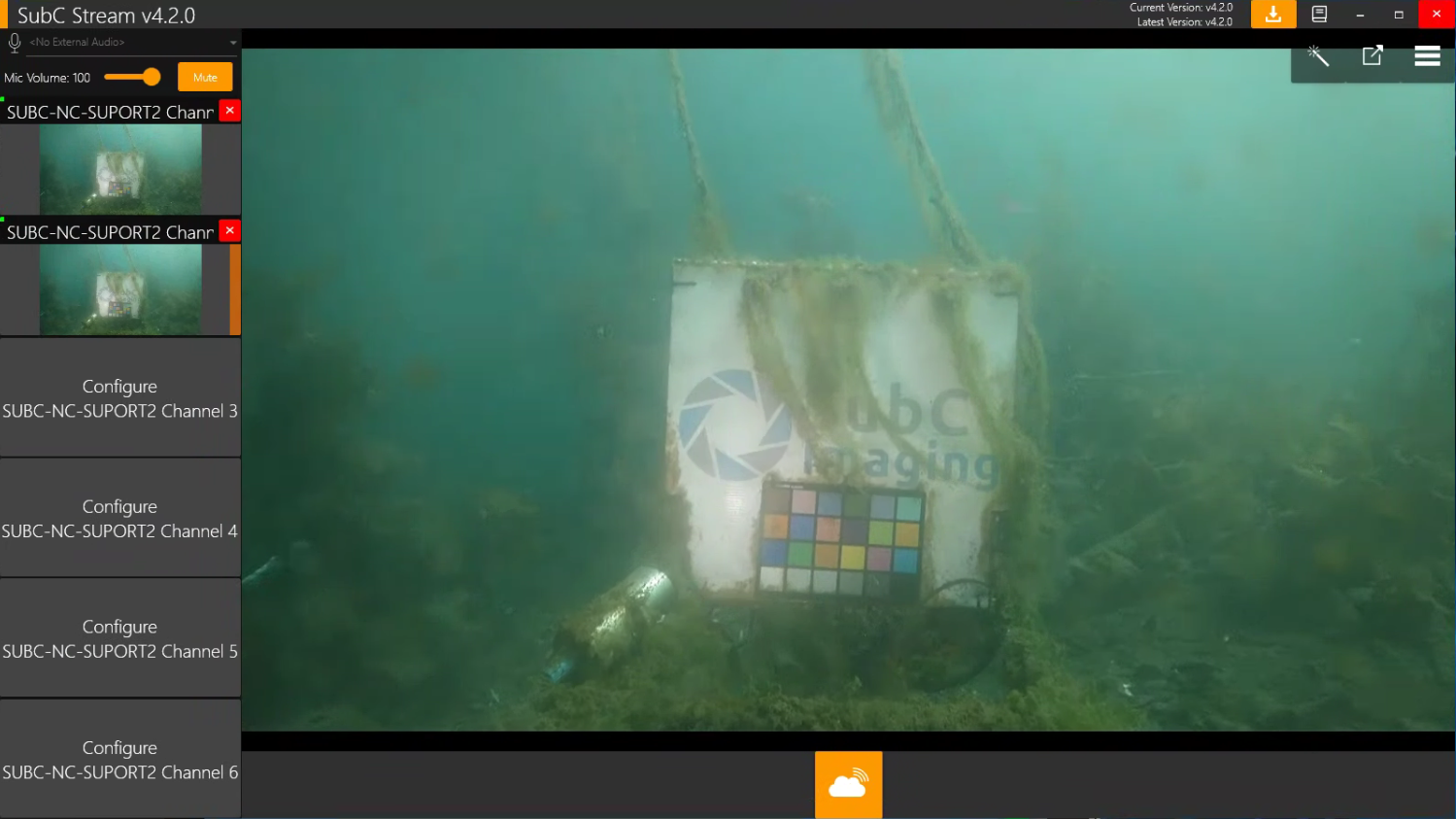
Typically, the Streaming Channel would be configured on another PC running a SubC Stream enabled application. In this example we are just using the same Stream desktop application to illustrate a sending side Streaming (Channel 1) and receiving side using Presentation Input (Channel 2).


